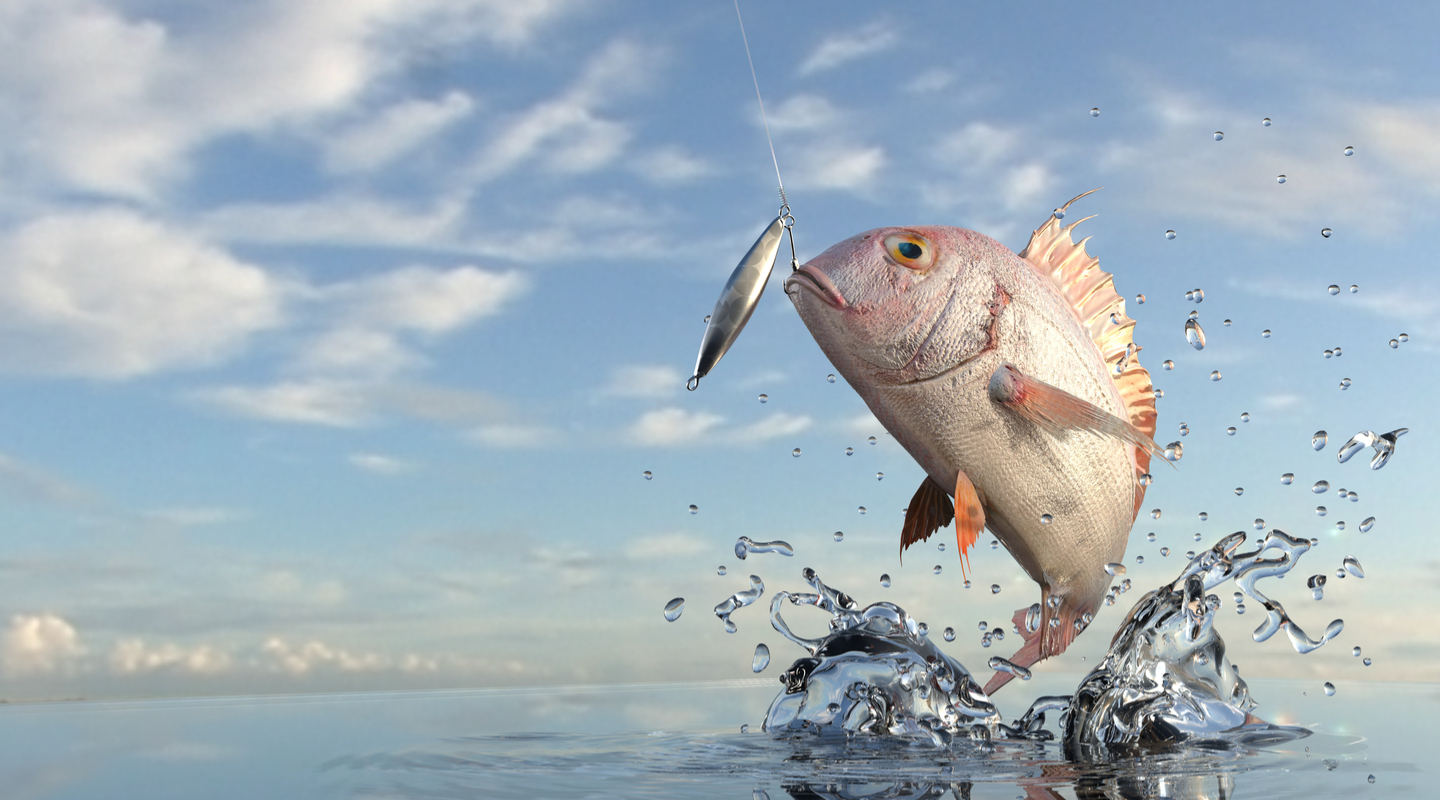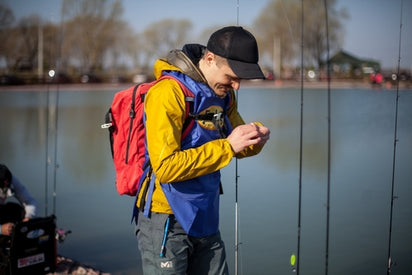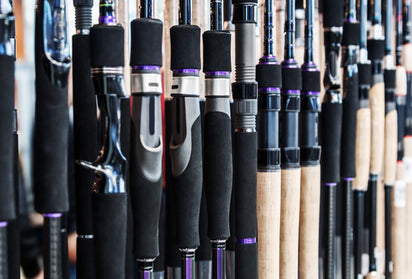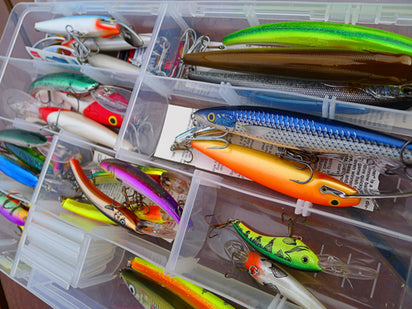Beginners Guide to Fishing Lures
If you’ve ever used an artificial lure to catch fish, you know how effective they can be. For those of you who haven’t, a fishing lure is a type of artificial fishing bait used to attract fish. Lures come in many different shapes, sizes, and colors, each designed to attract a specific range of fish species. Of course, what works with one fish won’t necessarily work with another. So, how do you know which fishing lure to use? Lets take a look at the most common types of fishing lures and how to use them. After you’ve read this, you’ll be able to catch your limit in no time!

Using a fishing lure is the most common alternative to live baiting. Before we dig into the various types of fishing lures, let’s take a look at some pros and cons of using them, when compared to using live bait.
The pros of fishing lures are:
- Lures allow you to cast further than using live bait
- Using lures is less messy than using live bait
- Lures are better for catch and release, because the fish are less likely to gulp the entire hook
- Using lures allows you to target a species more accurately
- Lures are easily interchangeable
The cons of using fishing lures are:
- Lures are generally more expensive than live bait
- Lures can get snagged on underwater structure
- Using lures requires you to constantly move them in order to attract the fish
- Some lures require skill to use effectively, which makes it harder for beginners
- Lures are not as effective as bait in colder waters
If you use them correctly, fishing lures can be your best friend. They are equally effective in freshwater and saltwater, and can be used to catch a wide variety of fish species. Naturally, there are many different types of fishing lures. Some of the most commonly used are:
Plugs
Plugs or crankbaits are hard plastic fishing lures shaped and colored to resemble bait fish or other prey. They’re made out of a solid or hollow piece of plastic, with a thin sheet of metal or plastic attached to the front. This sheet is called a lip.
The lip is sometimes adjustable to make the lure wobble. Plugs feature two or three treble hooks. Depending on the design, plugs can float, sink, dive, or hover.

Fishing with a Plug Lure
Most plugs float on the water’s surface or suspend in the water, but dive sharply when retrieved. You can take advantage of this with a series of reel-and-stop moves that will resemble the behavior of live bait fish. Change your twitching intervals and reeling speed for variety.
Jigs
Jigs have a weighted head on one side and a hook on the other. Featuring either a feather skirt or plastic grub, jigs are generally considered to be one of the most popular types of fishing lures. Thanks to their weight, jigs sink easily. This makes them great for bottom feeders.

Fishing with a Jigging Lure
To take advantage of the jig weight, cast it out and let it sink to the bottom. You’ll know that your jig has sunk the moment you see the line go slack. When this happens, start jigging: lift your rod up (slightly), and then retrieve the line as you lower it again.
Experiment with different speeds as well as big and small movements to see what works best. Keep your eyes on the line – a strike can make the faintest pull on it.
Spinnerbait
Spinnerbait lures are a little different because they move horizontally through the water. They come in many shapes and colors depending on the targeted depth and species.
Spinnerbaits come with a skirted hook on one side, and one or more metal blades which spin like a propeller, on the other. The spinning of the blades creates vibration and color reflection, which pretty accurately mimics minnows and other bait fish. These lures are perfect for catching species like Bass, Perch, and Pike.

Fishing with a Spinnerbait Lure
If the water you’re fishing in is murky, pulling your spinnerbait just beneath the surface is a great way of attracting game fish. The spinning blades make a sudden flash that attracts a lot of fish. Just keep your rod high and make sure the blades are beneath the surface.
If the fish are hiding in deeper waters where visibility is even worse, this won’t work. In this case, add a sinker and rely on the vibrations of your spinnerbait lure.
Spoons
Spoons are curved, concave metal lures. Spoon lures got their name because they were originally just that – spoons with the handles cut off. Their concave shape makes them shine and wobble as they move through the water. The bigger the curve, the wider the wobble. A wobbling lure resembles injured bait fish, and this is something game fish can’t say no to.

Fishing with a Spoon Lure
You can cast a spoon lure or troll it. For casting, anglers usually go for 10–20 feet below the target zone, and then retrieve the lure right through it. Make sure to take a good look at the moving spoon to determine the adequate speed of retrieval.
If the spoon moves too fast or too slow, it won’t wobble properly. Same goes for trolling. Trolling with spoons usually requires downriggers for setting a desired depth.
Soft Plastics
Soft plastic lures are flexible rubbery baits that imitate a variety of aquatic critters. These can be anything from minnows, worms, and crawfish to lizards and frogs. Soft plastics are frequently used for Bass fishing.

Fishing with Soft Plastic Lures
Be sure to select the right size and color of your soft plastic. The color of the lure should fit in naturally with the surroundings. Go with brighter plastics on a clear day, but stay away from them when the sky is overcast.
Wounded creatures tend to swim in spurts and soft plastics will allow you to mimic this movement very accurately. Let the lure sink to the bottom, and twitch your rod a few times. If you get no hook-up, pull the lure up in a few jerky moves.
Flies
Flies are a type of fishing lure traditionally used in fly fishing. Thanks to the development of new materials, they can be sometimes be used in spin fishing, as well. Fly fishing lures consist of just a single hook and a skirt. Using furs, feathers, or thread, these lures are tied to resemble insects, crustaceans, or other prey.
This resemblance can be mind boggling, mind you. That’s because fly tying is not easy – many even consider it to be an art form. But that’s one of the reasons why fly fishing is so immersive and addictive for those who try it.

Fishing with Fly Lures
Flies work great in areas where fish approach the water’s surface. Some fly lures are designed to float (surface flies), while others are designed to sink (subsurface flies).
Depending on what type of prey your targeted fish is more likely to eat, you’ll be using dry flies (waterproof lures that float on the surface to imitate insects), wet flies (lures designed to sink below the surface and imitate minnows and sunken insects), nymphs (imitating crustaceans), emerging flies (hatching insects), and streamer flies (bait fish).
We hope this helps you decide on which bait to use on your next fishing trip!










